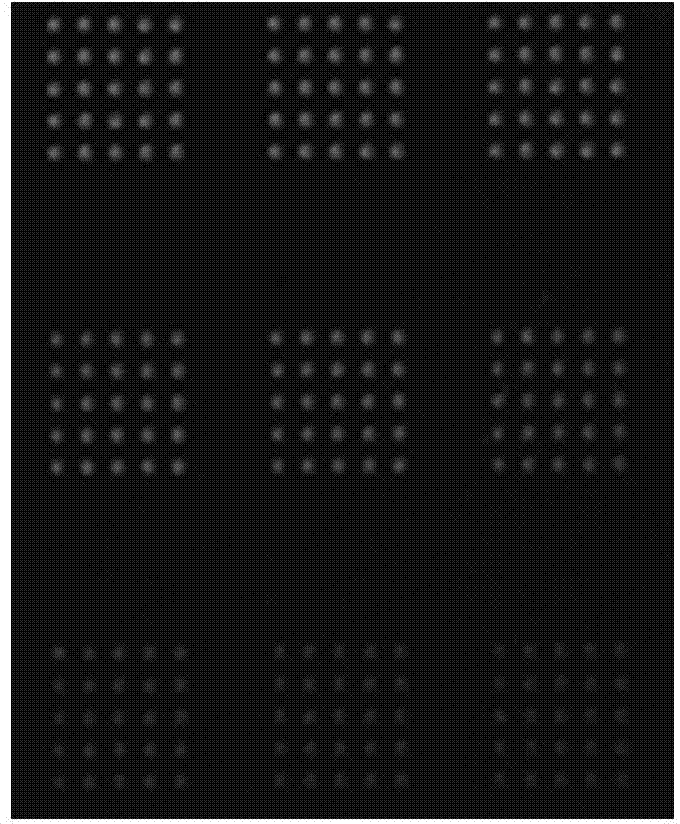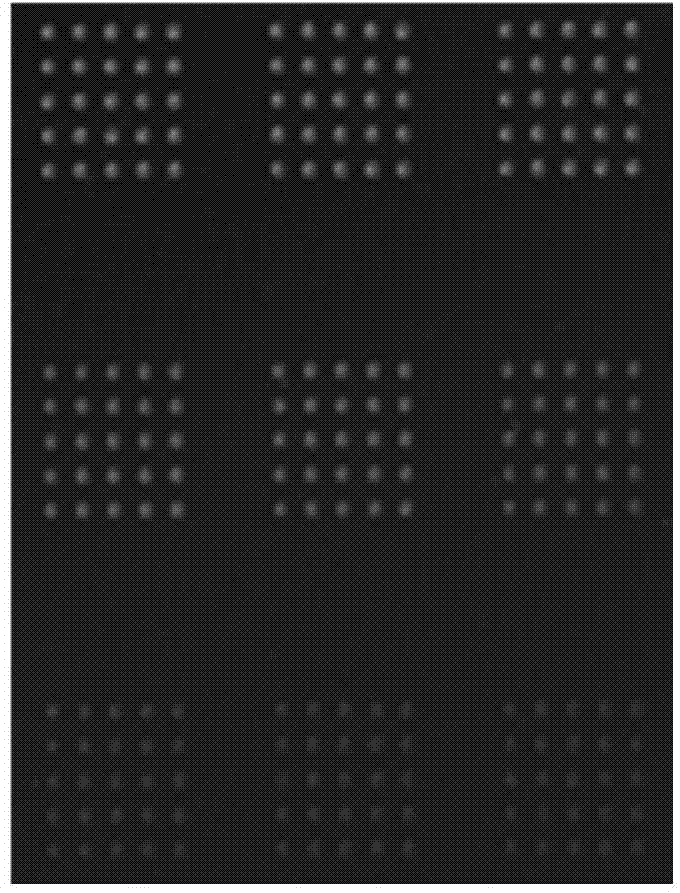Preparation method of three-dimensional biological chip substrate
A biochip and substrate technology, applied in the field of preparation of biochip substrates, can solve problems such as the inability to immobilize biomolecules at high density and restrict the wide application of biochips, and achieve high probe immobilization efficiency, high immobilization density, and detection The effect of high sensitivity
- Summary
- Abstract
- Description
- Claims
- Application Information
AI Technical Summary
Problems solved by technology
Method used
Image
Examples
Embodiment 1
[0028] Preparation of three-dimensional structured aminated glass substrate
[0029] (1) Hydroxylation of the film base: put the glass slide in a mixed solution of KOH, water, and isopropanol (mass ratio 1:18:21), sonicate for 15 minutes, wash twice with deionized water, and then Rinse with acetone for later use.
[0030] (2) Silanization of sheet base: prepare the ethanol solution of vinyltrimethoxysilane and glacial acetic acid, wherein the mass concentration of vinyltrimethoxysilane is 1%, and the mass concentration of glacial acetic acid is 0.1%. The substrate was put into the above solution, soaked for 30min, then washed with ethanol and dried.
[0031] (3) Preparation of the three-dimensional structure of the film base: configure a mixed solution of a photoinitiator (1-hydroxycyclohexyl phenyl ketone), PEGDA and GMA, acetone is a solvent, and the mass concentration of the photoinitiator is 5%, PEGDA: The molar ratio of GMA is 10:1, and the mass fraction of the mixed so...
Embodiment 2
[0034] Preparation of Three-Dimensional Structured Aminated Cycloolefin Copolymer (COC) Substrates
[0035] (1) Hydroxylation of sheet base: Wash the COC film in ethanol and dry it in the air, sandwich a 30wt% ammonium persulfate aqueous solution between the biaxially stretched BOPP and the COC film to form a liquid layer of about 0.5 μm. Then irradiate the surface of BOPP with UV light for 2 min at room temperature, rinse the obtained modified COC membrane with deionized water, immerse in ultrapure water for 16 h, rinse with ultrapure water and dry at room temperature.
[0036] (2) Silanization of sheet base: prepare the ethanol solution of vinyltrimethoxysilane and glacial acetic acid, wherein the mass concentration of vinyltrimethoxysilane is 3%, and the mass concentration of glacial acetic acid is 0.05%, the surface activated The substrate was put into the above solution, soaked for 25min, then washed with ethanol and dried.
[0037] (3) Preparation of the three-dimension...
Embodiment 3
[0040] Preparation of three-dimensional structured aminated polymethylmethacrylate (PMMA) substrate
[0041](1) Hydroxylation of the sheet base: the PMMA film is cleaned in ethanol and dried, and a 30 wt % ammonium persulfate aqueous solution is sandwiched between the biaxially stretched BOPP and the PMMA film to form a liquid layer of about 0.5 μm. Then irradiate the surface of BOPP with ultraviolet light for 3 minutes at room temperature, rinse the obtained modified PMMA membrane with deionized water, and immerse in ultrapure water for 16 hours, rinse with ultrapure water and dry at room temperature.
[0042] (2) Silanization of sheet base: prepare the ethanol solution of vinyltrimethoxysilane and glacial acetic acid, wherein the mass concentration of vinyltrimethoxysilane is 5%, and the mass concentration of glacial acetic acid is 0.08%, the surface activated The substrate was put into the above solution, soaked for 20min, then washed with ethanol and dried.
[0043] (3) P...
PUM
| Property | Measurement | Unit |
|---|---|---|
| wavelength | aaaaa | aaaaa |
Abstract
Description
Claims
Application Information
 Login to View More
Login to View More - R&D
- Intellectual Property
- Life Sciences
- Materials
- Tech Scout
- Unparalleled Data Quality
- Higher Quality Content
- 60% Fewer Hallucinations
Browse by: Latest US Patents, China's latest patents, Technical Efficacy Thesaurus, Application Domain, Technology Topic, Popular Technical Reports.
© 2025 PatSnap. All rights reserved.Legal|Privacy policy|Modern Slavery Act Transparency Statement|Sitemap|About US| Contact US: help@patsnap.com



